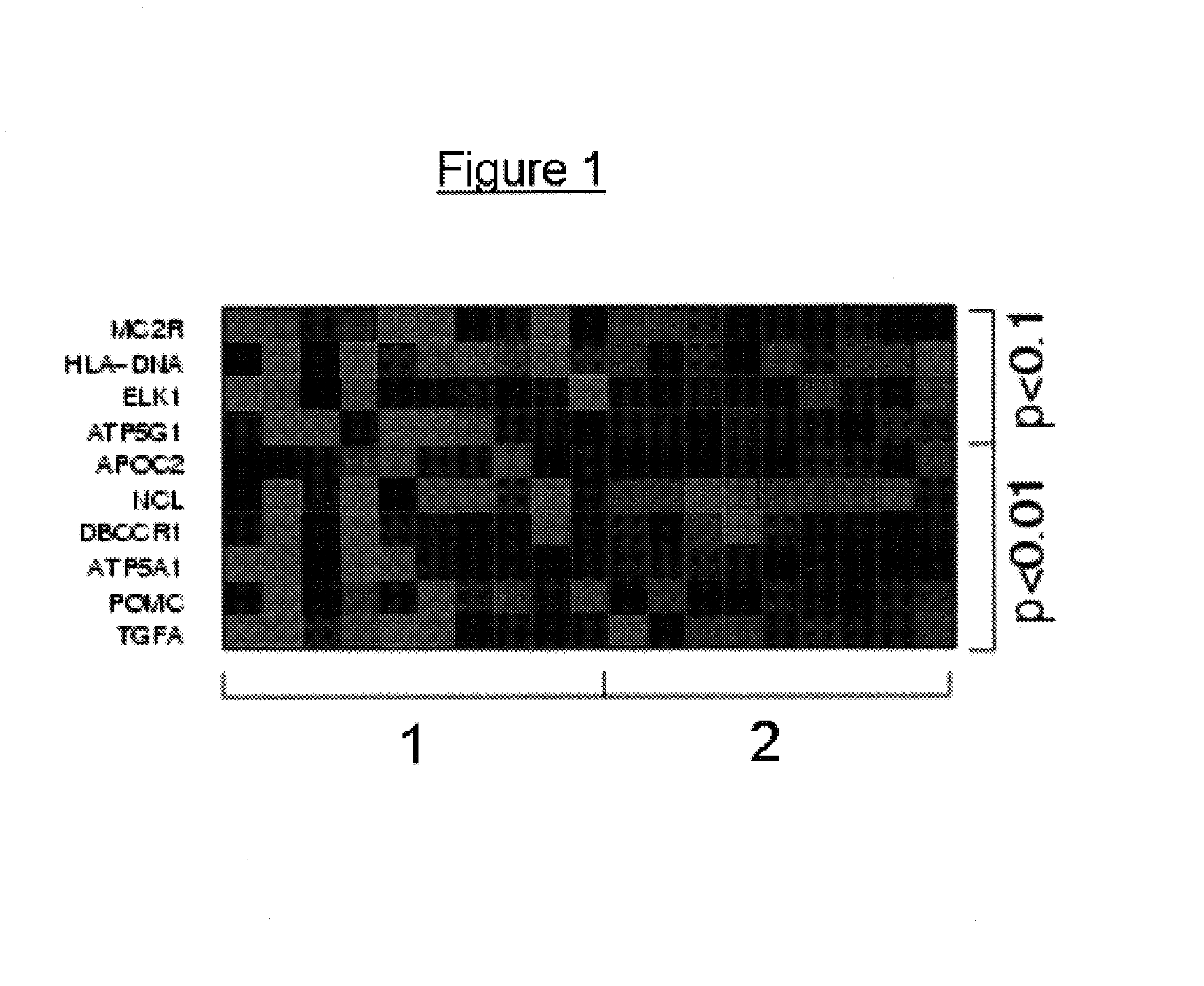Method and nucleic acids for the differentiation of prostate tumors
a prostate cancer and nucleic acid technology, applied in combinational chemistry, biochemistry apparatus, chemical libraries, etc., can solve the problems of insufficient or small biopsy samples affecting routine analysis, difficult to distinguish early stages of prostate carcinoma from benign hyperplasia of the prostate, and no single marker has been shown to be sufficient for the distinction between the two lesions
- Summary
- Abstract
- Description
- Claims
- Application Information
AI Technical Summary
Benefits of technology
Problems solved by technology
Method used
Image
Examples
example 2
Differentiation of Prostate Tumors
[0065]In order to relate the methylation patterns to a specific tumour type, it is initially required to analyze the DNA methylation patterns of two groups of patients with alternative forms of a tumor, in this case one group of benign prostate hyperplasia and another group of prostate carcinoma. These analyses were carried out, analogously to Example 1. The results obtained in this manner are stored in a database and the CpG dinucleotides which are methylated differently between the two groups are identified. This can be carried out by determining individual CpG methylation rates as can be done, for example, by sequencing, which is a relatively imprecise method of quantifying methylation at a specific CpG, or else, in a very precise manner, by a methylation-sensitive “primer extension reaction”. In a particularly preferred variant the methylation status of hundreds or thousands of CpGs may be analysed on an oligomer array. It is also possible for t...
PUM
| Property | Measurement | Unit |
|---|---|---|
| nucleic acid | aaaaa | aaaaa |
| peptide nucleic acid | aaaaa | aaaaa |
| sizes | aaaaa | aaaaa |
Abstract
Description
Claims
Application Information
 Login to View More
Login to View More - R&D
- Intellectual Property
- Life Sciences
- Materials
- Tech Scout
- Unparalleled Data Quality
- Higher Quality Content
- 60% Fewer Hallucinations
Browse by: Latest US Patents, China's latest patents, Technical Efficacy Thesaurus, Application Domain, Technology Topic, Popular Technical Reports.
© 2025 PatSnap. All rights reserved.Legal|Privacy policy|Modern Slavery Act Transparency Statement|Sitemap|About US| Contact US: help@patsnap.com

